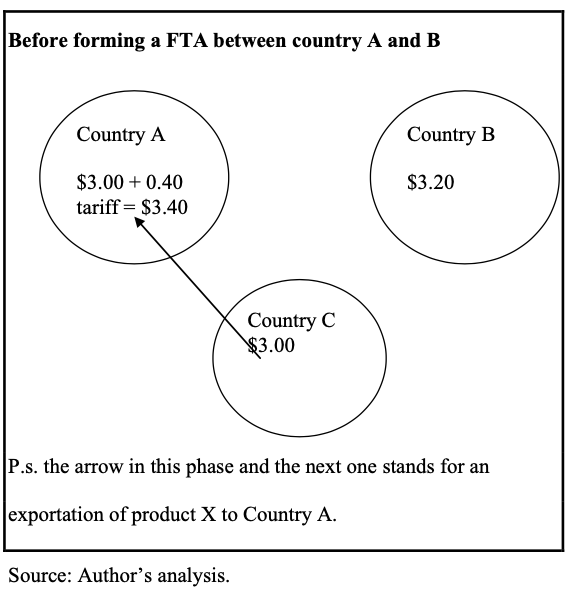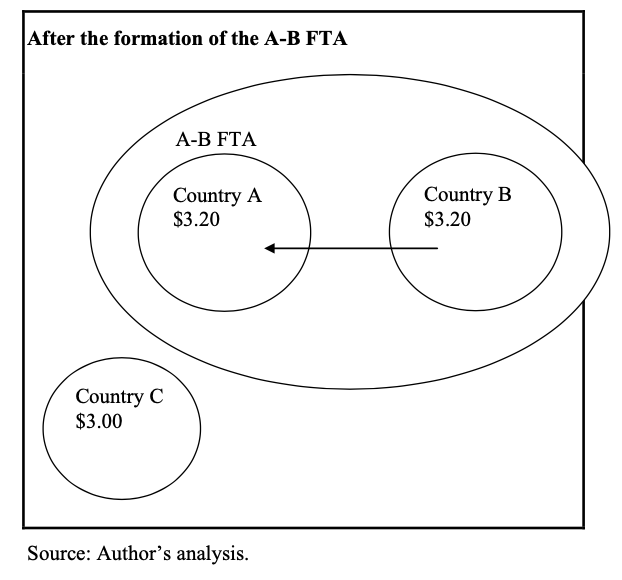
YOU SURE ABOUT THAT?
The United Nations (UN) and several international organizations have been fighting against discrimination for decades. Yet, the issue remains a daily struggle for millions of people worldwide. What is even more shocking is that 23 UN member states, legalized a form of discrimination in 1947. Something extraordinary happened that year.
In 1947, the General Agreement on Tariffs and Trade (GATT) was negotiated by the 23 countries and signed. Those 23 countries are active members within the UN. With the agreement, globalization was truly born. Countries started to realize that instead of war, peace was needed because, generally speaking, people need each other, rather than fighting against one another. It is a simple fact that war and greed sometimes blind people and nations from realizing it.
The agreement, through which the World Trade Organization was born, did however promote discrimination. The member states of the UN who continuously sit to discuss ways to fight discrimination promoted it within the GATT. Surprisingly, that discrimination has been taking place since 1947 at a universal level, affecting nations and people worldwide.
There is a vital principle to the GATT: the Most-Favoured-Nation (MFN) principle. Pursuant to Article 1 (General MFN Treatment) of the GATT 1994, a WTO member country is not allowed to discriminate between its trading partners. Accordingly, when a WTO member country lowers its customs duty rate for one of its goods coming from a particular member of the WTO, the same shall be done for all other WTO members.
Legal Analysis:
If certain conditions laid down in Article XXIV of the GATT 1994 are fulfilled, preferential trade agreements may be formed as a discriminatory exception to the MFN principle. A preferential trade agreement is a trade agreement between certain countries. It gives preferential tariff treatment to goods from countries that are parties to the agreement. A preferential trade agreement may be multilateral or bilateral. A multilateral trade agreement is formed between many countries. A bilateral agreement is formed between two countries.
Article XXIV of the GATT differentiates between two main forms of preferential trade agreements, CUs and FTAs. Article XXIV: 8 provides definitions for customs unions and free trade areas.
Article XXIV:8 (a) (i) states that a customs union is a trading bloc that consists of two or more members in which, with certain exceptions, duties and restrictions of commerce are "eliminated with respect to substantially all the trade" between the members of the union. Article XXIV: 8 (a) (ii) clarifies that a customs union imposes a common external tariff and other regulations of commerce related to commerce with WTO members which are third countries to the union.
Article XXIV: 8(b) provides the same requirements of Article XXIV: 8 (a) (i), but with respect to free trade areas.
Article XXIV: 4 provides that WTO member countries may form CUs or FTAs for the objective of facilitating trade between the constituent countries without raising barriers when it comes to trading with third countries
Article XXIV: 5 clarifies the conditions that shall be met to form a FTA or CU. Article XXIV: 5(a) and (b) illustrate that for preferential trade agreements to be formed, "the duties or other regulations of commerce" imposed at the formation of such agreements related to trade with third countries shall not on "the whole be higher or more restrictive" than those applied before the formation of the agreements.
Article XXIV: 6 clarifies that if the formation a CU results in a member country increase its tariffs above the concession rate, Article XXVIII would be applied. This means that the WTO member countries would have to enter negotiations with other WTO members. The aim of such negotiations is to compensate those third countries which found difficulties accessing the market of the CU member.
The Outcome: Trade Diversion:
Trade diversion is the opposite of trade creation. The formation of preferential trade agreements, in general, could lead to trade diversion.
Trade diversion happens when a final good producer switches his/her importation of inputs from an efficient external source of supply (located outside the preferential trade area) to a less efficient internal one (located inside the preferential trade area) in order then for the producer to take advantage of the preferential trade agreement duty-free access when exporting his/her final products to other member states within the same preferential trade area.
Based on the previous arguments, the formation of a preferential trade agreement could lead to trade diversion when the liberalization of tariffs among the preferential trade area member countries makes internal trade less expensive than external trade. This liberalization of tariffs and trade gives the internal suppliers special advantage that the outsider suppliers do not have. The liberalization of tariffs among the preferential trade area member countries is what causes the diversion and is discriminatory because the liberalization is provided to only the preferential trade area members and not to third countries.
The GATT MFN principle does not allow WTO member countries to discriminate between different sources of supply. Even though the signatories of the GATT kept in mind that that exceptions should bring "welfare" to the preferential trade agreements' contracting parties by creating trade within the preferential trade areas, they knew that the formation of these areas under article XXIV of the GATT went against the GATT MFN principle.
According to Jacob Viner, although the liberalization of tariffs among the member countries of a preferential trade area expands trade between them by encouraging sourcing the goods from inside the area, it diverts trade from an external cheap source of supply to an internal expensive one. Such diversion happens because following the formation of a preferential trade agreement, the tariff liberalization among the preferential trade agreement members makes the internal trade less expensive than trade with third countries external and gives the internal sources of supply "a price advantage.
The next two figures illustrate how trade diversion could take place as a result of forming a preferential trade agreement.
Using three hypothetical countries: A, B and C, the figures show how trade relationships between a FTA contracting party and an external source of supply may differ before and subsequent to the formation of the FTA. It is to be noted that the following discussion does not include in the figures the need for producers to make a profit because whoever the producer is in Country A, B or C, he will need to make a profit, so in principle it is neutral as between the two scenarios.
Suppose that before a FTA is formed between countries A and B, the importers in country A used to import a product (say X) costing $3.00 from country C at a price of $3.40 after paying a $0.40 external MFN tariff. Suppose also, on the other hand, that the price of producing product X in country B is $3.20. The import of product X from country B, at a price of $3.60 (including the $0.40 tariff payable), would be more costly for country A's importers than importing it from country C, ignoring transport costs, insurance, etc.

Once a FTA between countries A and B (A-B FTA) is formed, and customs duties removed, the importers of country A would source X from country B under preferences - at a price of $3.20 - more cheaply than they would source it from country C - at the price of $3.40. Thus, forming the A-B FTA will divert the trade in X from a formerly cheap source of supply in country C (producing X locally at the price of $3.00) to a costly one in country B (producing X locally at the price of $3.20). Hence, trade diversion can be observed by studying with which countries each contracting party to a preferential trade agreement is and was practicing trade in goods, prior and subsequent to the formation of the agreement.

In conclusion, trade diversion is an outcome to the formation of preferential trade agreements, which are discriminatory exceptions to the GATT MFN principle. Trade diversion affects the global efficiency negatively, since it increases production by inefficient producers in preferential trade areas and shrinks production by efficient third countries' producers (producers located outside of the preferential trade area).